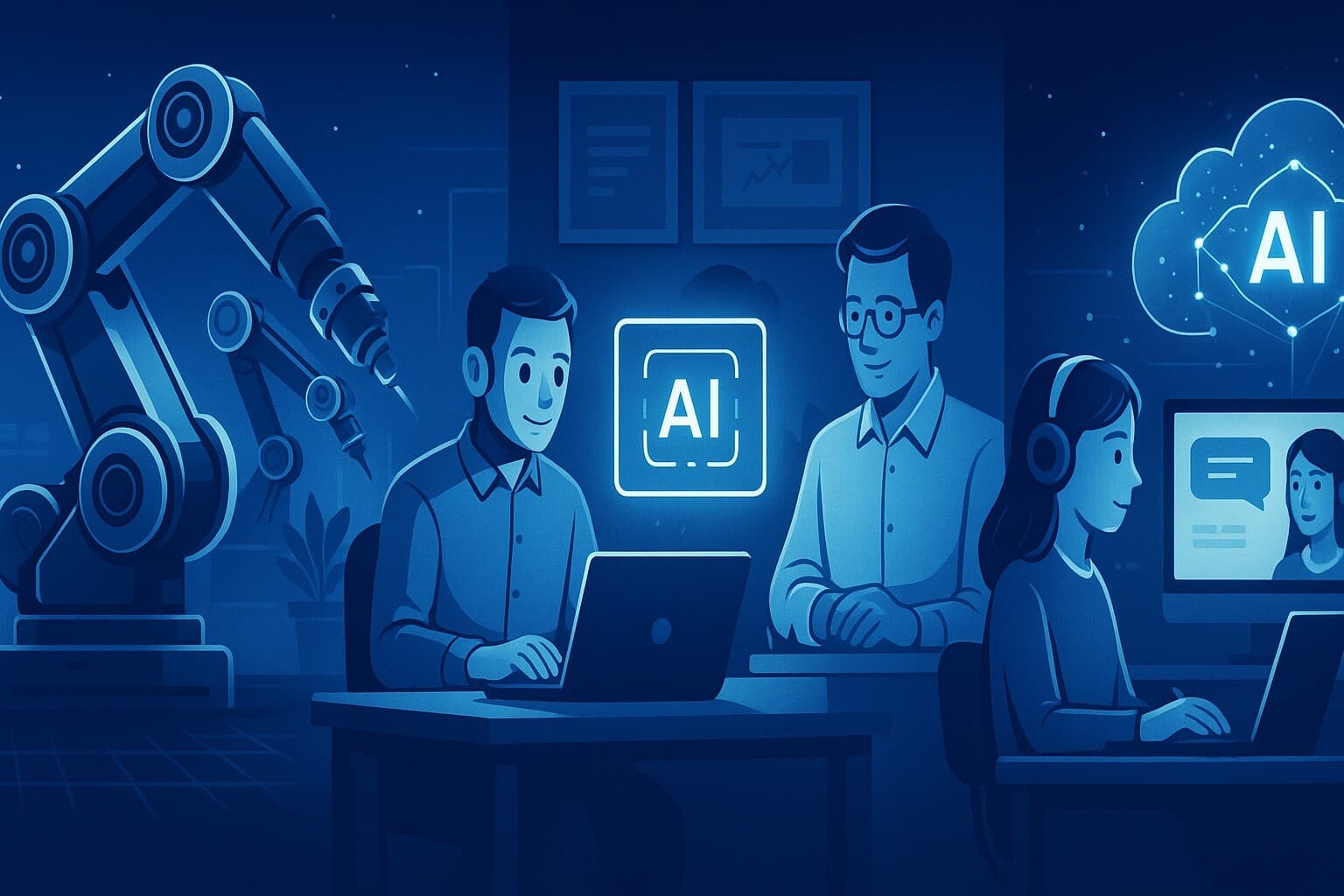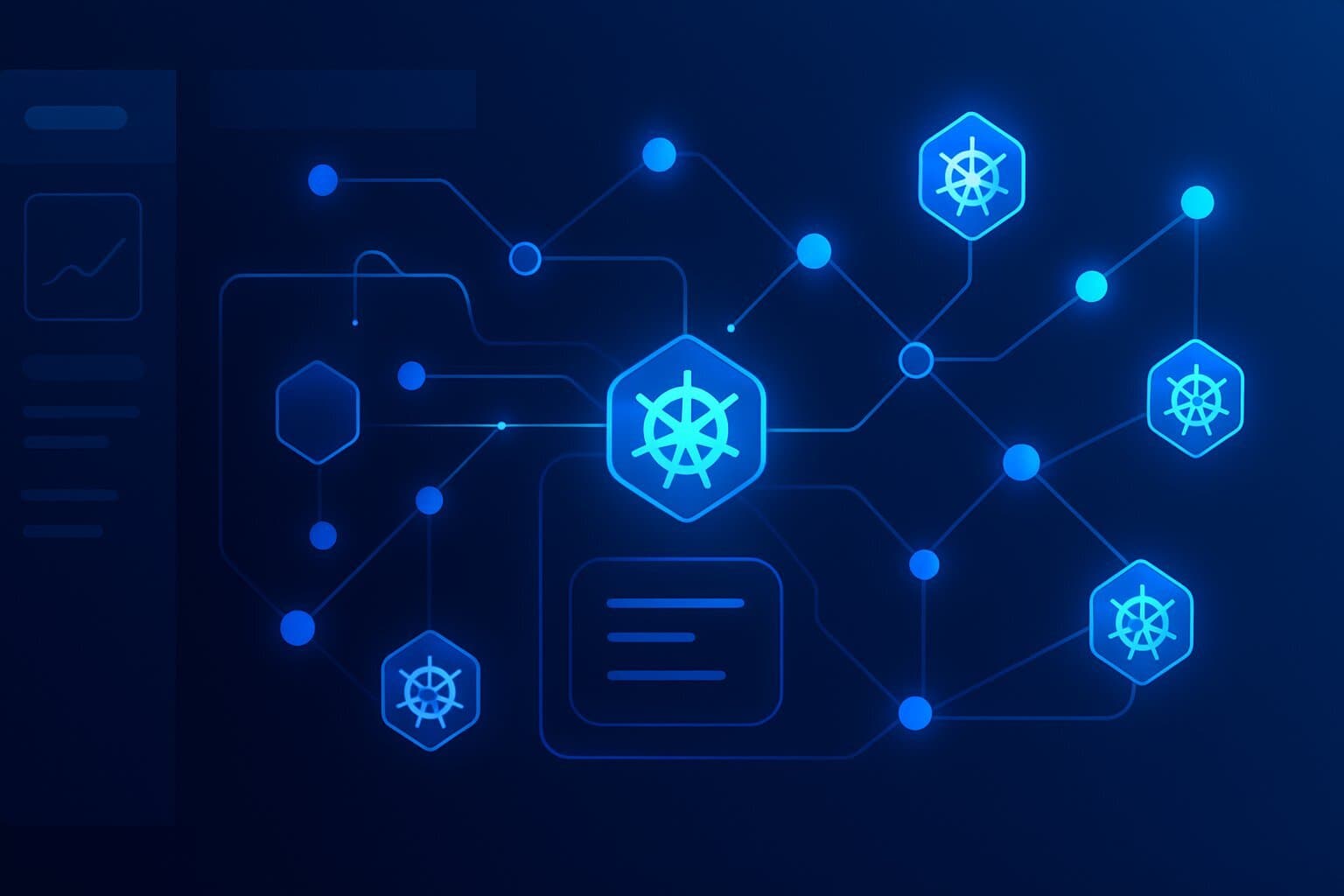May 2025
By: Bryan Reynolds | 30 May, 2025

Surfer SEO is a cloud-based content optimization platform designed to improve search engine rankings by analyzing top-ranking competitor pages and providing data-driven recommendations. It offers tools like the Content Editor, SERP Analyzer, Content Audit, and Topical Map for planning and optimizing SEO content. With strong AI integration—including Surfer AI Writer, Auto-Optimize, and NLP analysis—Surfer streamlines content workflows while enabling collaboration across teams. Despite its strengths in usability, collaboration features, and real-time optimization, it faces criticism for promoting over-optimization, content unnaturalness, and reliance on correlation-based metrics. Ideal for experienced SEO professionals and agencies, Surfer SEO is most effective when used critically and strategically rather than blindly following its scoring system.
Read MoreBy: Bryan Reynolds | 29 May, 2025

In 2025, artificial intelligence (AI) has evolved into a transformative force driving innovation, efficiency, and personalization across industries. This comprehensive report maps the current AI landscape, exploring top tools by category—from text generation and visual creation to workflow automation and marketing enablement—highlighting their strengths, use cases, and limitations. It outlines the booming global AI market, powered by increased investment and widespread adoption, and provides a strategic framework for selecting AI tools based on business needs, scalability, integration, and ethics. As the AI frontier continues to expand, the article emphasizes that success lies not merely in adopting AI tools, but in integrating them intelligently into workflows to amplify human potential and achieve sustainable growth.
Read MoreBy: Bryan Reynolds | 28 May, 2025

This comprehensive guide equips CFOs with a robust framework for evaluating the Return on Investment (ROI) of custom software development, transforming it from a perceived IT cost into a strategic financial decision. It deconstructs the full Total Cost of Ownership (TCO), outlines methods for quantifying both tangible and intangible benefits, and introduces advanced financial metrics like Net Present Value (NPV) and Internal Rate of Return (IRR) for long-term investment appraisal. Using detailed examples, it demonstrates how to apply these principles across diverse software initiatives—from automation to analytics—and emphasizes the importance of post-implementation KPI tracking for ongoing value realization. By following the outlined playbook, CFOs can ensure software investments drive measurable business outcomes and align with long-term financial strategy.
Read MoreBy: Bryan Reynolds | 27 May, 2025

The AI landscape in 2025 marks a pivotal shift from hype to high-impact integration, with rapid performance leaps, efficiency gains, and unprecedented enterprise adoption. AI models are not only becoming dramatically more capable—excelling in benchmarks and multimodal understanding—but also vastly more accessible through efficient small language models and falling inference costs. Open-source innovation is surging alongside proprietary advancements, democratizing deployment while foundational model development remains capital-intensive and centralized. Businesses are widely adopting AI, yet struggle with deep transformation needed for maximum ROI. Meanwhile, agentic and multimodal systems promise the next frontier of automation and interaction, all unfolding amid urgent calls for responsible AI governance and rising global competition, especially between the U.S. and China.
Read MoreBy: Bryan Reynolds | 26 May, 2025

Replit is an AI-powered, cloud-based development platform designed to democratize software creation by offering an accessible, all-in-one coding environment that supports over 50 programming languages, real-time collaboration, seamless deployment, and integrated AI assistance. With tools like the Replit Agent for app generation and the Replit Assistant for in-editor support, the platform enables rapid prototyping and empowers both technical and non-technical users to build and deploy applications directly from a browser. While ideal for learners, educators, SMBs, and internal tool developers, its performance and flexibility may fall short for enterprise-grade, mission-critical workloads. Its hybrid pricing model combines free access, subscriptions, and usage-based billing, and it emphasizes security through GCP infrastructure and SOC 2 compliance.
Read MoreBy: Bryan Reynolds | 23 May, 2025

Manus AI, developed by Monica.im, is a groundbreaking autonomous AI agent designed to bridge the gap between human intention and execution by autonomously completing complex, multi-step tasks across various domains. Unlike traditional conversational AIs, Manus AI functions as a “digital employee,” planning, executing, and delivering results independently. It supports a wide range of knowledge work—from research and data visualization to content creation and software development—while offering transparency through its “Manus’s Computer” interface. Currently in invite-only beta, it boasts high performance on benchmarks like GAIA but faces challenges in reliability, enterprise security, and scalability. Despite these hurdles, it holds disruptive potential in reshaping how professionals and businesses approach automation.
Read MoreBy: Bryan Reynolds | 22 May, 2025

Loveable AI is an AI-powered development platform that converts natural language prompts into full-stack web applications, enabling rapid prototyping, MVP creation, and frontend scaffolding. It combines accessibility for non-coders with developer-friendly features like GitHub integration and Supabase-backed backend generation. While its strengths lie in speed, usability, and end-to-end app generation, it faces limitations due to a credit-based pricing model and serious security vulnerabilities, particularly the 2025 "VibeScamming" exploit that exposed its potential misuse for phishing. Loveable AI is best suited for startups, solo developers, and early-stage projects that can tolerate usage-based pricing and have low security sensitivity.
Read MoreBy: Bryan Reynolds | 21 May, 2025

This comprehensive report examines the strategic decision between Commercial Off-the-Shelf (COTS) software and custom-built solutions, presenting a clear argument for the long-term advantages of custom software development. While COTS provides lower upfront costs and quick deployment, it often limits adaptability, scalability, and strategic differentiation. Custom software, by contrast, offers superior alignment with unique business needs, fosters innovation, enables deep system integration, supports long-term growth, and creates meaningful competitive advantages. Through detailed analysis, real-world case studies, and financial comparisons—including ROI and TCO—the report equips senior decision-makers with a robust framework to evaluate software investments in alignment with strategic goals.
Read MoreBy: Bryan Reynolds | 20 May, 2025

This comprehensive report explores how custom software solutions can dramatically enhance operational efficiency for mid-sized B2B companies. It examines common challenges such as manual data entry, fragmented systems, inefficient workflows, and poor integration, and presents custom software as a strategic tool for solving these problems. Through detailed case studies, comparisons with off-the-shelf software, ROI analysis, and tailored value propositions for CTOs, CFOs, and sales and marketing leaders, the report outlines how bespoke digital solutions can streamline operations, reduce costs, improve scalability, and drive sustainable growth.
Read MoreBy: Bryan Reynolds | 19 May, 2025

This comprehensive report outlines the warning signs that a software development partner may be hindering, rather than supporting, business growth—especially for mid-market B2B organizations in sectors like finance, healthcare, and technology. It details common operational pain points such as inefficiencies, outdated systems, poor scalability, and security risks, and identifies specific partner behaviors like communication breakdowns, reactive support, and lack of strategic alignment that indicate a misfit. The report also provides frameworks, KPIs, and personas-based diagnostics to help CTOs, CFOs, and other executives assess partner effectiveness. Ultimately, it argues that switching to a growth-focused partner like Baytech Consulting may be essential to overcoming these limitations and achieving long-term, scalable success.
Read MoreBy: Bryan Reynolds | 16 May, 2025

Business owners must strategically decide whether to refactor or rebuild their software systems, a choice with significant financial, operational, and competitive implications. Refactoring involves improving the internal structure of existing code to enhance maintainability and efficiency without altering core functionality, offering lower risk and cost but limited transformation. Rebuilding, on the other hand, entails creating a new system from scratch to overcome deep technical debt, adopt modern technologies, or align with major strategic shifts, offering long-term benefits but carrying higher risk and investment. This decision should be guided by a thorough assessment of technical debt, business strategy, financial constraints, team capabilities, risk tolerance, and opportunity costs—recognizing that the optimal path depends on each company’s unique context and goals.
Read MoreBy: Bryan Reynolds | 15 May, 2025

This article explores the critical dynamics behind building a successful Minimum Viable Product (MVP), highlighting why many MVPs fail due to an imbalance between speed and architecture. It outlines the strategic importance of validated learning, identifies common pitfalls in execution, and offers actionable frameworks to balance rapid market entry with a scalable technical foundation. Through case studies and practical recommendations, it guides startups in avoiding technical debt traps and over-engineering, helping them launch smarter and build products that truly meet user needs.
Read MoreBy: Bryan Reynolds | 14 May, 2025

Selecting the right software development partner—whether onshore or offshore—is a high-stakes decision with long-term business impact. This report provides a comprehensive guide for navigating the selection process, emphasizing the importance of strategic alignment, process maturity, communication, cultural fit, and intellectual property protection. While US-based firms offer closer collaboration and legal simplicity, offshore companies provide cost efficiency and broader talent access but require stronger oversight and risk management. By focusing on holistic evaluation, rigorous due diligence, and a multi-layered IP protection strategy, businesses can identify a partner that delivers not just code, but sustainable business value.
Read MoreBy: Bryan Reynolds | 13 May, 2025

This comprehensive analysis explores OVHcloud's Bare Metal server offerings, highlighting their competitive pricing, high-performance configurations, and generous unmetered bandwidth. It examines OVHcloud’s value across various server tiers—from budget-friendly to enterprise-grade—while assessing market positioning against hyperscalers like AWS and regional players like Hetzner. The report also covers included features such as Anti-DDoS protection, vRack private networking, and infrastructure automation via Metal Instances. Baytech Consulting leverages OVHcloud as the foundation for its hybrid infrastructure stack, emphasizing cost-effective control through open-source tools like Harvester and Rancher. The analysis concludes with a realistic appraisal of OVHcloud’s strengths, such as compliance certifications and European data sovereignty, balanced against its weaknesses, particularly support responsiveness and past reliability concerns.
Read MoreBy: Bryan Reynolds | 12 May, 2025

Sentry.io is a developer-focused application monitoring platform specializing in real-time error tracking and performance insights for web, mobile, and backend applications. It offers a free plan for individual developers and scalable paid plans for teams, with unique flexibility to self-host for cost control at scale. Compared to competitors like Datadog, New Relic, Rollbar, and Bugsnag, Sentry stands out for its rich developer-centric features, strong platform support, and open-source availability. For most small-to-midsize teams, Sentry’s SaaS provides the best balance of ease and cost, while self-hosting becomes financially advantageous at very high volumes.
Read MoreBy: Bryan Reynolds | 09 May, 2025

Azure DevOps is a comprehensive, all-in-one DevOps platform by Microsoft that streamlines the entire software development lifecycle, from planning and coding to building, testing, and deploying. It offers integrated services like Azure Boards, Repos, Pipelines, Test Plans, and Artifacts, making it ideal for organizations seeking efficiency, quality, and continuous delivery. Compared to alternatives like GitHub, GitLab, Jira, Jenkins, and CircleCI, Azure DevOps excels in end-to-end traceability, deep Microsoft ecosystem integration, and robust project management, though it may lag behind in community size and cutting-edge open-source features.
Read MoreBy: Bryan Reynolds | 08 May, 2025

Argo CD is an open-source continuous delivery (CD) tool built for Kubernetes that uses a GitOps approach to automate application deployments. It ensures that the live state of applications always matches the desired state stored in Git, providing faster, more reliable, and auditable deployments. Unlike Jenkins, which is primarily a continuous integration (CI) tool and requires complex pipeline scripting, Argo CD is Kubernetes-native, easier to scale, and simpler to manage, particularly for SaaS companies looking to streamline operations and reduce downtime. It is free to use, integrates deeply with Git and Kubernetes, and is widely adopted by major SaaS and enterprise companies like Intuit, Adobe, and Capital One to improve deployment consistency, developer productivity, and operational scalability.
Read MoreBy: Bryan Reynolds | 07 May, 2025

This report provides an in-depth analysis of Rancher Enterprise Kubernetes Management, highlighting its capabilities in multi-cluster management, hybrid and multi-cloud support, user-friendly operations, and integration with Harvester hyper-converged infrastructure (HCI). It compares Rancher to alternative platforms like Red Hat OpenShift, VMware Tanzu, and managed Kubernetes services from AWS, Azure, and Google Cloud, evaluating their features, pricing models, and total cost of ownership (TCO). The report also explores the financial implications of adopting Rancher, operational and infrastructure costs, and offers strategic recommendations for organizations considering Rancher as their Kubernetes management solution.
Read MoreBy: Bryan Reynolds | 06 May, 2025

This comprehensive analysis examines the state of DevOps in 2025, highlighting how AI/ML integration, platform engineering, GitOps, and DevSecOps are transforming software development and delivery. With global adoption reaching 80% across industries and market growth projected at 20.1% CAGR, DevOps has become a strategic imperative despite challenges like cultural resistance and skill gaps. The article explores emerging trends including self-healing systems, developer experience optimization, and sustainable practices that will shape the future DevOps landscape beyond 2025, providing organizations with actionable insights to navigate this rapidly evolving ecosystem.
Read MoreBy: Bryan Reynolds | 05 May, 2025

This comprehensive analysis compares the total cost of ownership between Salesforce and custom private cloud applications for large enterprises with 500+ users. While Salesforce offers lower initial costs and faster deployment with subscription-based pricing starting at $165-$500 per user monthly, custom solutions require significant upfront investment ($150,000-$500,000+) but potentially lower long-term costs. The five-year TCO for Salesforce ranges from $4.9-$10 million depending on add-ons, while custom solutions range from $1.2-$3.6 million with varying development and maintenance costs. Organizations should consider their customization needs, growth trajectory, data sovereignty requirements, and budget constraints when making this strategic decision.
Read MoreBy: Bryan Reynolds | 02 May, 2025

This comprehensive report examines the rise of low-code development platforms in the digital landscape, analyzing their significant benefits alongside inherent limitations that organizations eventually encounter. While these platforms offer accelerated development and empower non-technical users, they face challenges in scalability, customization, vendor lock-in, integration with legacy systems, security vulnerabilities, and performance bottlenecks as applications grow more complex. The analysis identifies scenarios where low-code approaches fall short, explores future trends including AI integration and enterprise-grade capabilities, compares leading platforms, investigates common reasons for project failure, and provides strategic recommendations for successful implementation. With the global low-code market projected to reach $187 billion by 2030, organizations must carefully navigate these platforms' strengths and limitations through strategic planning, hybrid development approaches, robust governance frameworks, and prioritization of security and scalability to harness their potential while effectively mitigating associated risks.
Read MoreBy: Bryan Reynolds | 01 May, 2025

This report provides a comprehensive analysis of the trade-offs between offshore and onshore software development models. Offshore development offers notable cost savings, access to a global talent pool, and scalability, but introduces risks like communication barriers, quality control challenges, and security concerns that can lead to costly rework. Onshore development, while more expensive initially, provides superior communication, greater control, and better alignment with local market needs, minimizing long-term risks and maintenance costs. The report emphasizes that strategic decision-making should prioritize a thorough evaluation of total cost of ownership (TCO), project complexity, risk tolerance, and long-term quality outcomes rather than focusing solely on hourly rates. A balanced, holistic approach is critical to achieving successful, cost-effective software development.
Read MoreBy: Bryan Reynolds | 30 April, 2025

Harvester HCI is an open-source, Kubernetes-based hyperconverged infrastructure solution offering a cost-effective alternative to proprietary platforms like VMware vSAN, Nutanix, Scale Computing, and Azure Stack HCI. Built for bare-metal environments, it integrates virtualization, storage, and networking into a unified platform without licensing fees, significantly reducing total cost of ownership (TCO). Harvester supports standard hardware, offers seamless integration with Rancher for hybrid workloads, and delivers strong scalability and management simplicity. While it may lack some of the advanced features of mature competitors, its open-source foundation, commodity hardware compatibility, and cloud-native design make it an attractive choice for organizations prioritizing cost savings, flexibility, and modernization.
Read More

